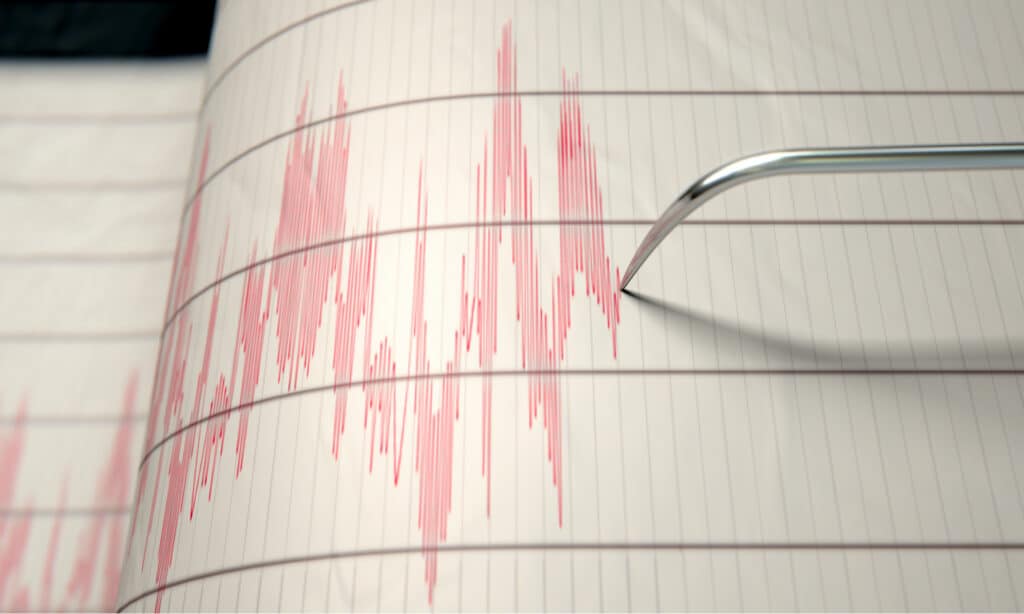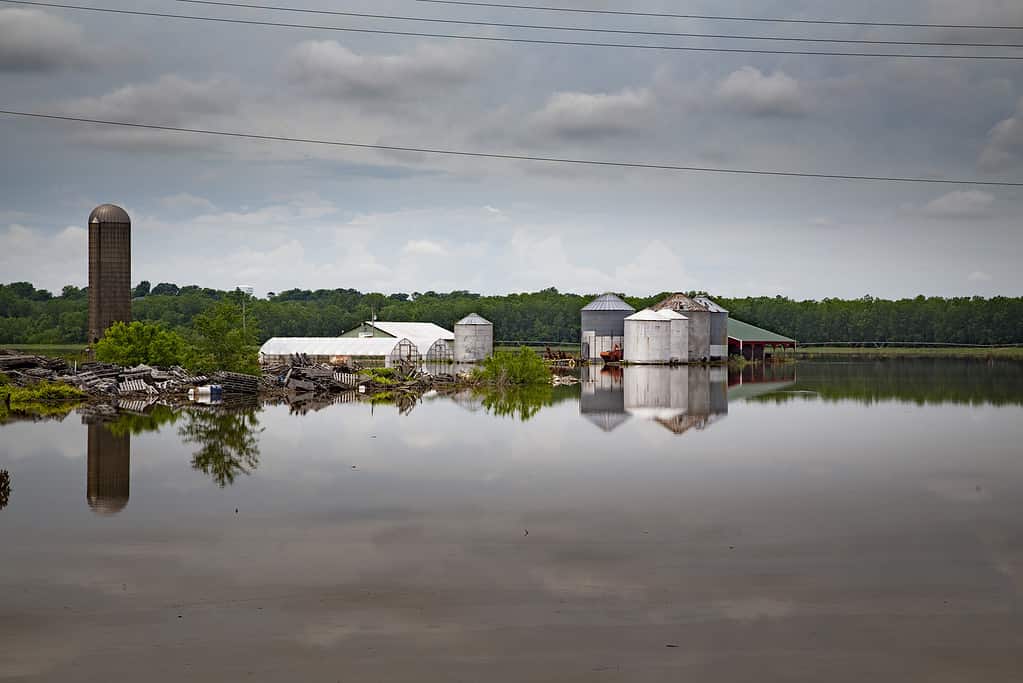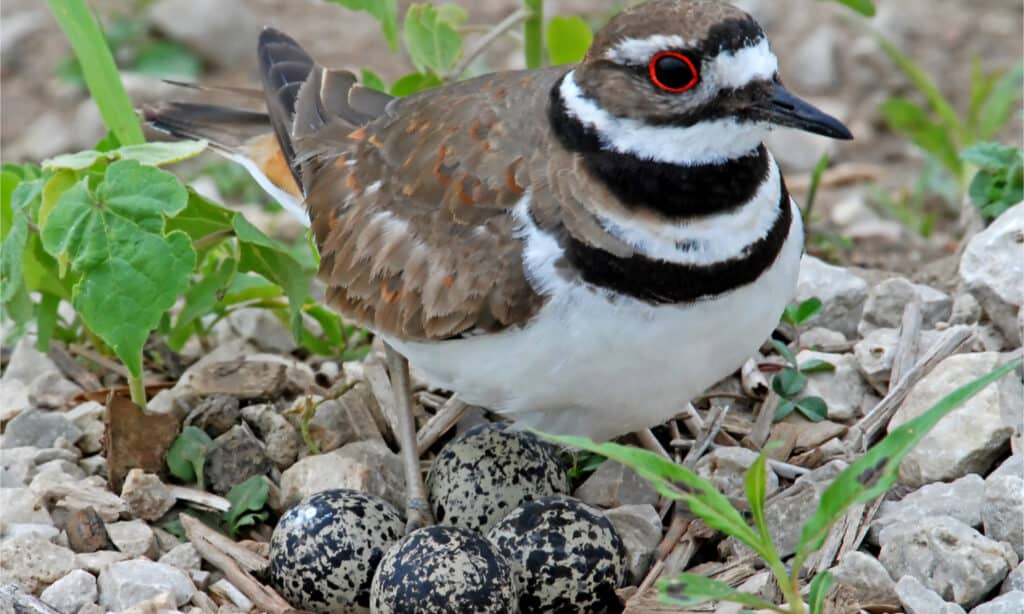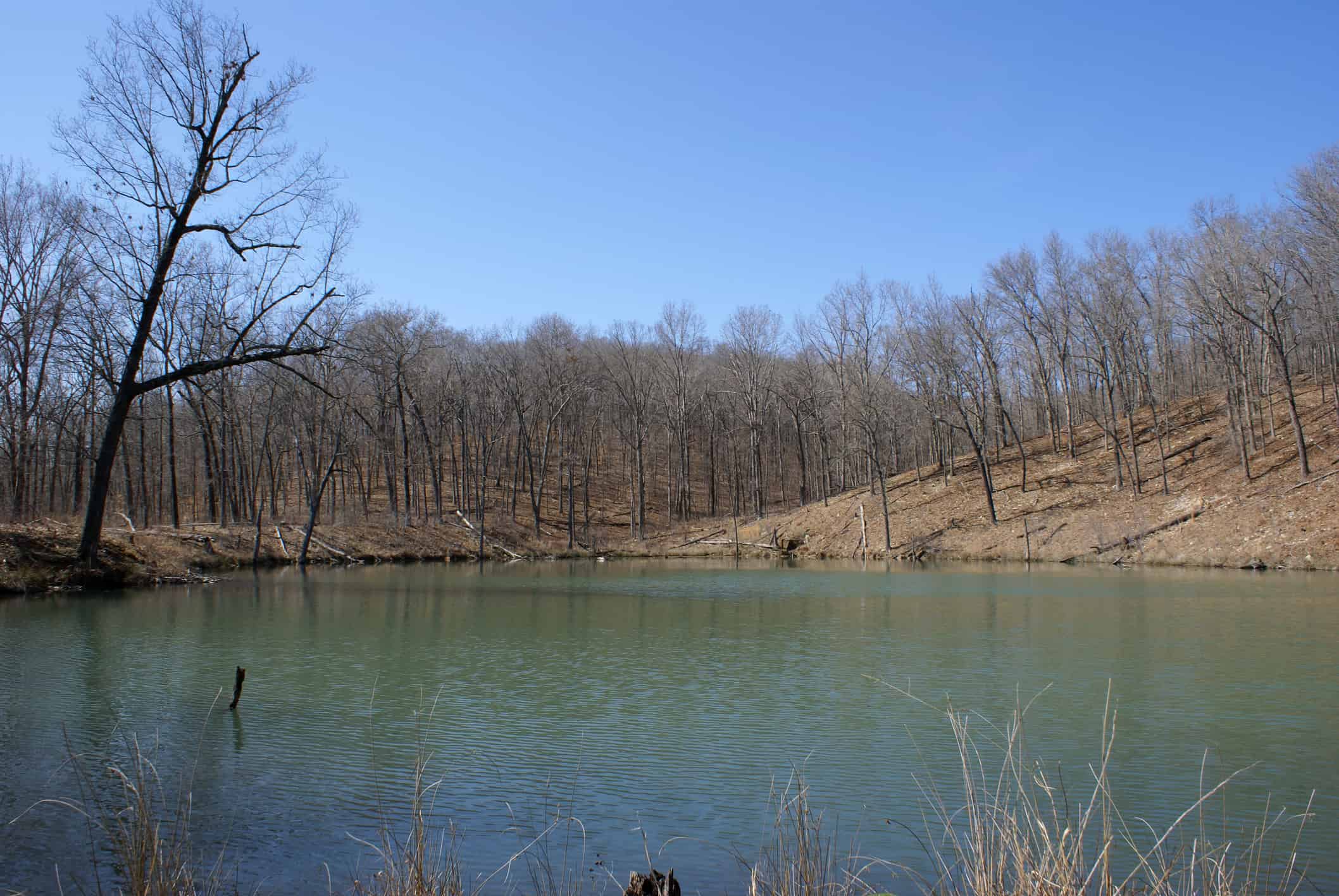Missouri lies within the Midwestern region of the United States. States in the Midwest are known for their violent storms, in particular for tornadoes and hail storms. However, the region also experiences its fair share of earthquakes. While most towns in Missouri don’t experience earthquakes often, a few face a significantly greater risk from earthquakes. Keep reading to discover the Missouri town most likely to experience an earthquake.
Fault Lines in Missouri

The New Madrid Seismic Zone produces the most and largest earthquakes in Missouri.
©Inked Pixels/Shutterstock.com
Also known as the New Madrid Fault Line, the New Madrid Seismic Zone is located in southeastern Missouri. This 150-mile-long seismic zone covers five states, including Illinois, Missouri, Tennessee, Kentucky, and Arkansas. It gets its name from the town of New Madrid, Missouri, the site of the 1811-12 New Madrid earthquakes.
The New Madrid Seismic Zone primarily serves as a source for intraplate earthquakes or earthquakes within the tectonic plates. Most of the earthquakes in the zone occur between 3 and 15 miles below the surface of the Earth.
Although the zone lies far away from a tectonic plate boundary, the area experiences significant tectonic activity. Experts believe that the faults responsible for the activity in the zone formed sometime during the Cambrian Period. These faults lie within the Reelfoot Rift, a geological feature deep below the surface. While the rift failed to rip North America apart, it caused the ground to weaken significantly. This weakness exposes the zone to compressive forces from the slow, westward movement of the North American Plate. These forces cause numerous small earthquakes in the area and throughout the American Midwest.
Natural Disasters in Missouri

Flooding ranks as one of the most common natural disasters in Missouri.
©iStock.com/Wirestock
Since 1990, Missouri has been the site of over 40 federal major disaster declarations. Tornadoes, ice storms, and flooding rank as the most common natural disasters in Missouri. However, earthquakes have also greatly affected the state, as you’ll soon see.
The Great Flood of 1993 occurred on the Missouri and Mississippi Rivers in the Midwestern United States. Above-normal rainfall and below-average temperatures likely caused the flood, which ranks as the most costly flood in the history of the country. The flood greatly affected Missouri, damaging homes, infrastructure, and agriculture. While not as catastrophic, the Johnson’s Shut-Ins Flood of 2005 and the Great Flood of 1951 also caused an immense amount of damage in the state.
As far as earthquakes, no event in Missouri history did as much damage as the 1811-12 New Madrid earthquakes. The initial earthquake started on December 16, 1811, and recorded a magnitude between 7.2 and 8.2. Later that same day, an aftershock of around 7.4 occurred, followed by two more earthquakes in January and February 1812. To date, the New Madrid earthquakes score as the strongest earthquakes east of the Rocky Mountains in U.S. history. According to accounts of the time, people felt the tremors strongly over an area of 50,000 square miles and moderately over an area of 1 million square miles. The earthquake ripped trees from the ground, collapsed riverbanks, and toppled houses throughout the region.
#1 Town Most Likely to Experience an Earthquake in Missouri
Although New Madrid is the poster child of earthquakes in Missouri, it doesn’t face the greatest risk of earthquakes in the state. That honor belongs to Howardville, a city in New Madrid County. Howarville lies on U.S. Routes 61 and 62, just a few miles west of New Madrid.
According to seismographic data, Howardville boasts an earthquake index ranking of 134.04. Meanwhile, New Madrid has a score of 133.31, less than a full point below Howardville. Such a score means Howardville ranks as “Very High” in terms of its exposure to earthquakes compared to the rest of the United States. However, it pales compared to some spots in the western United States. For example, McGee Creek, California, has an earthquake index score of 167.57
History of Howardville
Travis B. Howard, a well-known activist and educator, founded Howardville in the mid-20th century. Howard graduated from Tuskegee Institute, the historically black college founded by Booker T. Washington. Howard agreed with Washington that land ownership was one of the primary ways that African Americans could improve their economic prospects. To make this vision a reality, Howard purchased 200 acres of land and sold lots to displaced sharecroppers. The resulting community became known as Howardville.
Wildlife Around Howardville
You can find a wide variety of mammals, reptiles, birds, amphibians, and fish in the area around Howardville. Mammals commonly found in the area include deer, rabbits, raccoons, possums, and squirrels. In nearby streams and lakes, you can find ducks and geese, as well as numerous species of fish. Some fish frequently caught by anglers in the area include sunfish, bluegill, crappie, and bass.
How Do Earthquakes Impact Wildlife?

Earthquakes can impact wildlife, such as birds, by destroying nests and reshaping the landscape.
©Brian A Wolf/Shutterstock.com
It’s well-known that earthquakes can have a devastating impact on landscapes, communities, and people. In addition to affecting peoples’ livelihoods and property, earthquakes can also wreak havoc on wildlife. Earthquakes can create landslides, which can destroy nesting sites for birds and other animals. They can also damage infrastructure, such as dams, which can cause catastrophic flooding. Whenever major earthquakes occur, conservation and animal organizations work to assess the damage done to wildlife and identify the necessary steps needed to protect and preserve affected animals.
What to Do in an Earthquake
While you cannot predict when an earthquake will happen, you can take steps to reduce the impacts of earthquakes on your home and family. If you live in an area prone to earthquakes, make your home safer by fixing or fastening objects to the wall or floor. Identify spaces where you can drop, cover, and hold within your home, place of work, or school. Strong tables and other furniture usually make suitable cover during an earthquake. Stay away from doors and windows, as these areas are less safe than other parts of the home. Protect your head and neck from falling objects, and stay indoors until the shaking subsides. If the shaking does not stop after a minute, head inland to the highest ground that you can find, especially if you live in a tsunami zone.
Where is the New Madrid Fault Line Located on a Map?
The New Madrid Seismic Zone, also known as the New Madrid Fault Line, is a significant and active seismic zone responsible for a high number of intraplate earthquakes in the Southern and Midwestern regions of the United States. It extends southwestward from New Madrid, Missouri, and is recognized as a major source of seismic activity in the area.
Here is the New Madrid Fault Line on a map:
Thank you for reading! Have some feedback for us? Contact the AZ Animals editorial team.








